Tetsujin 28 go
5.6 /10 1 Votes
Duration | 5.6/10 IMDb Director Tatsuji Yamazaki | |||||||||||||||||||||||||||||||||
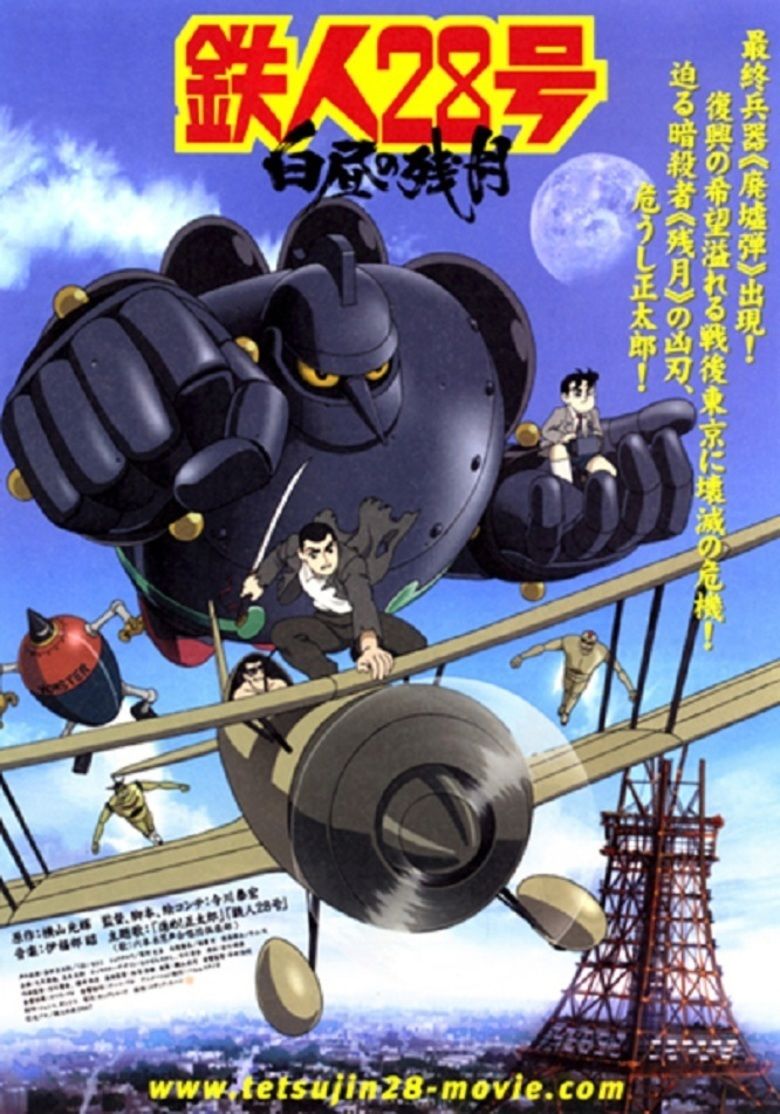 | ||||||||||||||||||||||||||||||||||
Release date March 31, 2007 | ||||||||||||||||||||||||||||||||||
28 tetsujin 28 go 2005 trailer
Tetsujin 28-gō (Japanese: 鉄人28号, Hepburn: Tetsujin Nijūhachi-gō, lit. "Iron Man No. 28") is a 1956 manga written and illustrated by Mitsuteru Yokoyama, who also created Giant Robo. The series centred on the adventures of a young boy named Shotaro Kaneda, who controlled a giant robot named Tetsujin 28, built by his late father.
Contents
- 28 tetsujin 28 go 2005 trailer
- Plot
- Characters
- Publication
- Design
- 1963 television series
- 1980 television series
- Tetsujin 28 go FX
- 2004 television series
- 2004 PlayStation 2 videogame
- 2005 live action film
- Attempted US live action film
- Further projects
- US adaptations
- Legacy
- References
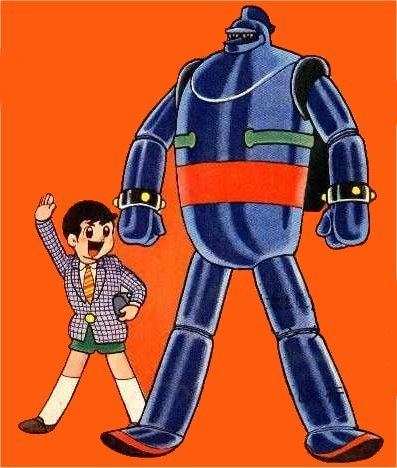
The manga was later adapted into four anime television series, a Japanese television drama and two films, one live action and one animated. Released in 1963, the first series was among the first Japanese anime series to feature a giant robot. It was later released in America as Gigantor. A live-action movie with heavy use of CGI was produced in Japan in 2005.
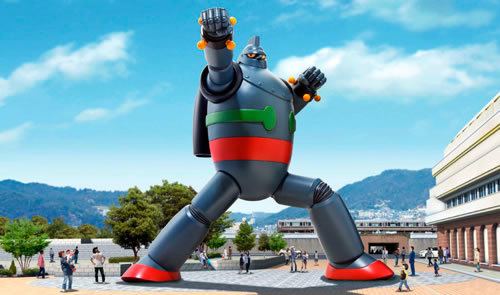
Mecha were popularized by Japanese anime and manga, and the first humanoid giant robot is Tetsujin 28-Go; who was controlled externally via remote control by an operator. The first occurrence of mecha being piloted by a user from within a cockpit was introduced much later in the manga and anime series Mazinger Z by Go Nagai, first published in 1972.
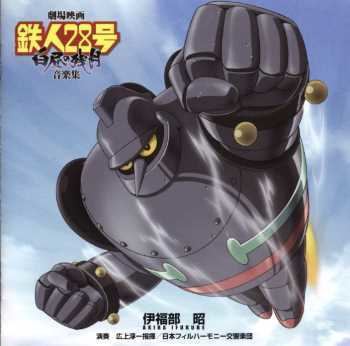
Plot
In the final phase of the Pacific War, the Imperial Japanese Army were developing a gigantic robot "Tetsujin 28-go" as the secret weapon to fight against the Allies. However, Japan had surrendered before they can complete its construction. After the war, Dr. Kaneda, the developer of Tetsujin 28-go passed his robot to his son Shotaro Kaneda.
Characters
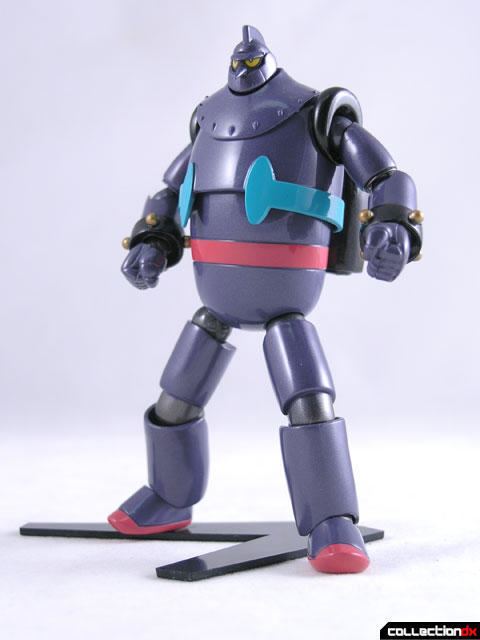
Publication
Tetsujin 28-go was serialized in Kobunsha's Shōnen Magazine from July 1956 to May 1966, for a total of 97 chapters. The series was collected into 12 tankōbon volumes, which are re-released every ten years.
Design
Yokoyama's Tetsujin, much like Osamu Tezuka's Astro Boy, was influenced by the artist's wartime experiences. In Yokoyama's case, this was through the bombing of Kobe in World War II.
As he had written in Ushio magazine in 1995, "When I was a fifth-grader, the war ended and I returned home from Tottori Prefecture, where I had been evacuated. The city of Kobe had been totally flattened, reduced to ashes. People said it was because of the B-29 bombers...as a child, I was astonished by their terrifying, destructive power." Another influence on Tetsujin's creation was the Vergeltungswaffen, a set of wonder weapons designed for long-range strategic bombing during World War II, and the idea that Nazi Germany possessed an "ace in the hole to reverse [its] waning fortunes". The third work to inspire Yokoyama's creation was the 1931 film Frankenstein, which shaped Yokoyama's belief that the monster itself is neither good or evil.
1963 television series
The 1963 television incarnation of Tetsujin 28-go aired on Fuji TV from 20 October 1963 to 25 May 1966. The series initially ended with 84 episodes, but then returned for 13 more, for a total of 97 episodes. The series had mostly short plots that never took up more than three episodes, but was generally more light-hearted than the anime that would succeed it. Shotaro, Otsuka, Shikishima and Murasame functioned as a team in this version. Only 52 of the 97 episodes were ever dubbed in English.
1980 television series
The 1980-81 Shin Tetsujin 28-go (New Tetsujin 28) series was created with 51 color episodes based on a modernized take upon the original concept art. In 1993, Fred Ladd and the TMS animation studio converted the series into The New Adventures of Gigantor and had it broadcast on America's Sci-Fi Channel from September 9, 1993 to June 30, 1997.
Tetsujin 28-go FX
Chō Dendō Robo Tetsujin 28-go FX is a sequel to Tetsujin 28-go directed by Tetsuo Imazawa and produced at the Tokyo Movie Shinsha studio. It ran on Nippon Television from April 5, 1992 to March 30, 1993, totaling 47 episodes. It has been brought over to Latin America, but never released in English-speaking countries.
The show follows Shotaro's son, Masato, who controls a new edition of Tetsujin and works at a detective agency with other children. Among them are Shiori Nishina, granddaughter of Chief Otsuka. The Tetsujin FX (Iron Hero 28 Future X) is controlled by a remote control gun, which has to be aimed at the robot for it to take commands.
2004 television series
Written and directed by Yasuhiro Imagawa, the 2004 remake takes place ten years after World War II, approximately the same time as the manga debuted. The new television series has been released in the United States under its original name Tetsujin-28 by Geneon and in the United Kingdom by Manga Entertainment, the first time a Tetsujin-28 property has not been localized to "Gigantor" in America or other English speaking nations. The television series focused mainly on Shotaro's pursuit to control and fully understand Tetsujin's capabilities, all the while encountering previous creations and scientists from the Tetsujin Project. While not fully based on the original manga, it followed an extremely different storyline than in the 1960s series.
On March 31, 2007, a feature-length film, entitled "Tetsujin 28-go: Hakuchu no Zangetsu" (which translates as "Tetsujin #28: The Daytime Moon") was released in Japanese theaters. The film used the same character designs and scenery as the 2004 television series, albeit the film remade the series from the beginning. Among the changes, a new character "Shoutarou" debuted, Shotaro's older half-brother who was in the same airforce troop as Ryuusaku Murasame. Also a character named Tsuki, with a heavily bandaged body, attempts to murder Shotaro.
2004 PlayStation 2 videogame
In Sandlot's videogame adaption, released July 1st 2004, you control Tetsujin 28 from the point of view of Shotaro Kaneda—able to control both Shotaru and Tetsujin 28. The control method is slightly simplified compared to Sandlot's other giant robot games such as Robot Alchemic Drive, in that you are not asked to control each leg separately. But you gain the ability to fly Tetsujin 28, and well as have him pick up buildings, enemies, and even Shotaru.
The game uses the same voice actors as the animation, though it takes presentation cues from the anime, the manga, as well as the kaiju film genre.
2005 live-action film
The live action movie was released in the US on DVD by Geneon Entertainment in 2006 and has been licensed for a UK release by Manga Entertainment. The movie centers on Shotaro, who is living in the modern age with his widowed mother. Tetsujin 28 is accidentally discovered, and Shotaro's mother explains that it was left for Shotaro. He, with the help of Chief Otsuka and an older female classmate, learns to control Tetsujin. In the meantime, a Dr. Reiji Takumi activates Black Ox and plans to attack Tetsujin.
Attempted U.S. live-action film
Idlewild director Bryan Barber picked up the remake rights to Gigantor in 2011 with plans to adapt it. But no further developments have happened since then.
Further projects
On December 26, 2008, Felix Ip, the creative director of Imagi Animation Studios, revealed screenshots from a computer-animated teaser video featuring Black Ox and Tetsujin. On January 9, 2009, the Japanese animation company Hikari Productions and IMAGI launched the project's website. The teaser features Dr. Franken with nearly the same name that he had in the 2005 movie, him also being the leader of a terrorist organization, and Shotaro being designed to look more like Daisaku from Giant Robo: The Animation. The movie has not yet been finalized, as its further production depends on worldwide success of the Astro Boy movie. Bryan Barber recently expressed interest in pitching a Hollywood film version of Gigantor, and allegedly has the merchandising rights to the property.
US adaptations
In the US adaptation of the 1963 Tetsujin 28 series, which was done by Fred Ladd, all of the character names were changed, and the wartime setting removed. Shotaro Kaneda became Jimmy Sparks, Dr. Shikishima became Dr. Bob Brilliant, Inspector Otsuka became Inspector Ignatz J. Blooper, and Kenji Murasame became Dick Strong. The series' setting was pushed forward to the year 2000. The 1980 television series was also exported to America in 1993, retitled as The New Adventures of Gigantor, with most of Fred Ladd's names intact. The 2004 television series, released by Geneon, retained all of its original names.
Legacy
References
Tetsujin 28-go WikipediaTetsujin 28-go IMDb Tetsujin 28 go themoviedb.org
